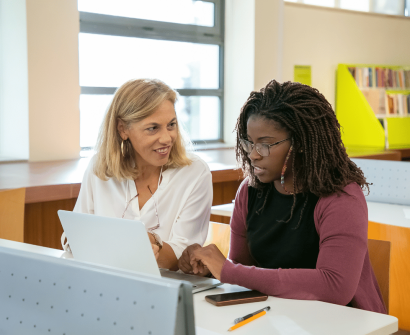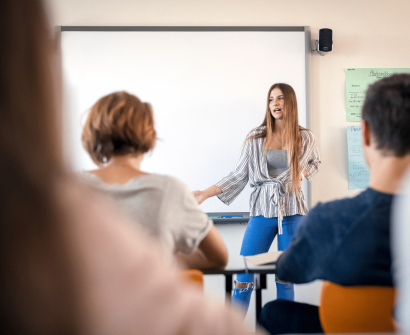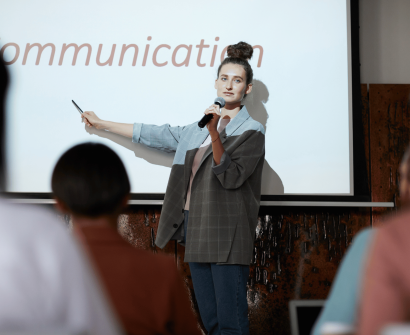
The Transformative Intersection of Education and Technology
Do you remember the smooth sound of chalk on a blackboard or the soft rustle of pages turning in a quiet classroom? These moments bring back memories of learning in its purest form. Traditional Teaching has shaped the way students absorb knowledge for generations, creating countless lightbulb moments along the way. Even today, 67% of educators rely on these trusted methods. But just like a story gaining new chapters, education is growing in exciting ways.
Some worry that AI might replace teachers, but the real story is quite different. Instead of taking over, technology is giving educators new tools to make lessons even better. It’s not about choosing between the old and the new. It’s about blending them together to create a learning experience that is more engaging, personal, and effective for every student.

The Dynamic Fusion: AI Complementing Traditional Education
1. Redefining the Classroom Experience
Traditional education has always excelled in fostering meaningful interpersonal connections and nurturing emotional intelligence. Today, AI does not aim to replace these essential elements; rather, it enhances them. While educators continue their invaluable roles in guiding and mentoring, AI-driven tools are adept at managing time-intensive tasks such as marking papers and monitoring attendance. This collaboration enables teachers to devote more energy to what they excel at: inspiring and engaging with their students.
2. Scalable Personalisation
A significant challenge of traditional teaching methods has been the difficulty in tailoring education to meet each student’s unique needs. Here’s where AI truly shines:
- Adaptive Learning Platforms assess and analyse each student’s progress
- Lessons that adapt to individual learning paces
- Instant feedback mechanisms that keep students aligned with their learning goals
- Custom-built practice exercises focusing on individual areas for improvement
3. Expanding Access to Education
The integration of AI with traditional teaching methodologies has democratised quality education in numerous ways:
- Students in remote locations can connect with expert educators through AI-enhanced virtual classrooms
- Learning disabilities are supported through AI-assisted technologies
- Language obstacles are alleviated with real-time translation services
- Educational resources are available around the clock via smart learning platforms
4. Advanced Assessment and Feedback
While traditional education has always prioritised thorough assessment, AI elevates this process:
- Immediate feedback on assignments and assessments
- In-depth analysis of learning patterns
- Proactive identification of students who may be struggling
- More precise and impartial grading systems
5. The Essential Human Element
Although the educational landscape is rapidly changing, the foundational aspects of traditional teaching are irreplaceable:
- Providing emotional support and encouragement
- Developing critical thinking capabilities
- Promoting social interaction and teamwork
- Encouraging creativity and innovation
These core elements are now enhanced—not replaced—by AI capabilities that give educators deeper insights into student progress and needs.
6. Strategies for Seamless Integration
Modern educators are discovering innovative strategies to effectively merge AI with traditional teaching approaches:
- Utilising AI for homework assessments while maintaining engaged in-class discussions
- Implementing flipped classroom models complemented by AI-assisted home learning
- Crafting hybrid assessment systems that blend AI evaluations with human assessments
- Creating collaborative projects that leverage both digital and conventional resources
7. Envisioning the Future of Education
The future of education lies not in choosing between conventional teaching and AI but in their effective integration. Leading educational institutions are pioneering how pedagogical methods can evolve while upholding their essential principles:
- Interactive smart boards that augment traditional presentations
- AI-driven teaching assistants that complement, rather than replace, human instructors
- Hybrid learning environments that fuse the best characteristics of both approaches
- Data-informed insights that fine-tune traditional teaching strategies
Successful teaching has always revolved around adaptation and growth. Today’s educational evolution simply offers additional tools for this ongoing journey, making traditional teaching methods more effective and accessible than ever.
Discover more about this transformative topic through these valuable resources:
- The Synergy of AI and Traditional Teaching Methods
- Enhancing Classical Pedagogy with Modern Technology
- Success Stories: Integrating AI While Upholding Traditional Values
Final Thoughts
Education is changing, and AI is helping make learning better, not replacing teachers. When technology and human guidance work together, classrooms become places where every student gets the support they need. Teachers can focus on what they do best—guiding, inspiring, and connecting with students—while AI handles the extra tasks, making lessons more effective. The blend of smart tools and real teaching creates a future where learning is more exciting and personal. Want to see how AI can help schools and learners today? Visit AthenaAI.co.za and explore the future of education with us.






